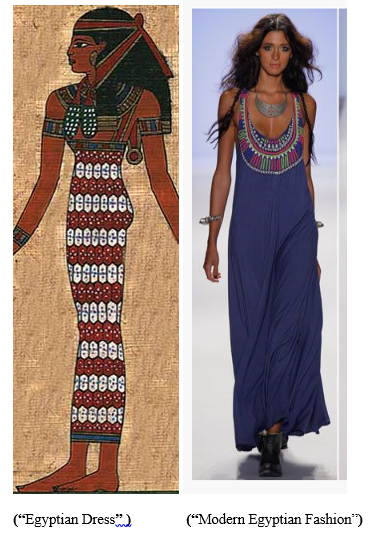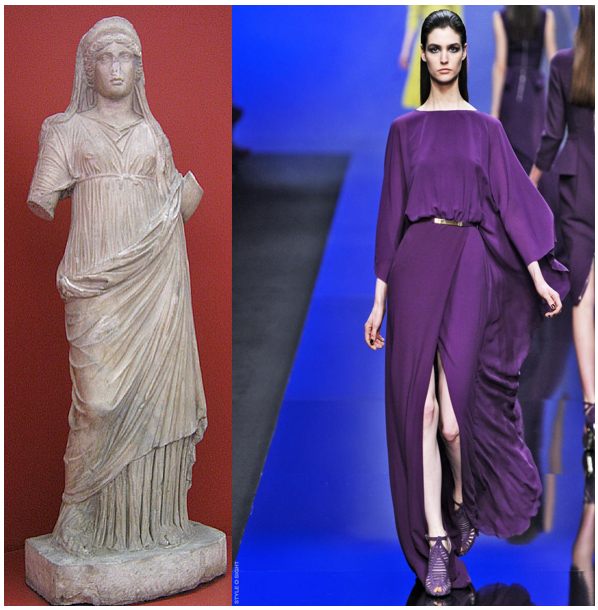Ancient Middle East: Kalasiris

Critical Thinking
Kalasiris exemplifies the traditional type of dress that was worn by women in ancient Egypt during the New Kingdom period. Yet, it also has some modern adaptations. In many cases, this garment is used as a source of inspiration by designers (Modern Egyptian Fashion). For example, one can speak about fringed skirts that can be held either by shoulder straps or girdles. Moreover, these skirts are often made of only one piece of linen (“Egyptian Dress”). Furthermore, the original dress and modern adaptation reach the ankles and cover the legs almost completely. More importantly, these garments are easy to wear because they do not restrict the movement of a person. These are some of the similarities that can be identified.
Some interesting distinctions should not be overlooked. For example, the contemporary dress is much more sensual since it has a deeper décolleté. Moreover, the modern adaption of a kalasiris appears to be looser. These examples indicate that modern designers pay close attention to Egyptian clothing; yet, they make it easier to wear. On the whole, a kalasiris could be worn by women, who represented the Egyptian nobility. This garment could be used daily. Yet, nowadays, this dress appeals to many women who can wear it on some social occasions; yet, they do not do it very often.
This garment was used to project the image of prosperity and high social status. As a rule, these women were not slaves, and they did not have to be engaged in harsh physical labor. However, it is important to remember that the indicators of social status in ancient Egypt have not been fully researched by historians. This is why it is difficult to speak about the image that women tried to project by wearing a kalasiris.
Stola: Ancient Rome and modernity

Critical Thinking
There are several peculiarities of design indicating that the contemporary dress can be viewed as the adaption of the ancient stola. First of all, in both cases, they can be described as long and loose gowns that reach the ankles. Secondly, the belt is used to create broad folders above the waste. Moreover, stolas can be fastened by clasps at the level of shoulders. Traditionally, this dress is worn over a tunic. These are some of the aspects that should be identified since they enable viewers to say that the Roman stola attracts the attention of modern designers.
There is an interesting detail that should be considered while comparing ancient toga and its modern adaptation. In Ancient Rome, this type of clothing was used to conceal the sexuality of women (“Rome”). In this way, they tried to distinguish themselves from courtesans or adulteresses. However, the contemporary version of this dress enables women to highlight their physical attractiveness.
It should be mentioned that in Ancient Rome, stolas could be worn primarily by the wives of Roman citizens. So, this dress could be viewed as a sign of high social status and even authority. Yet, nowadays, it can be worn by any woman on various social occasions. Additionally, by wearing this dress, Roman women could emphasize their ability to reach ethical standards that were set in this society.
For example, it is possible to mention such a quality as loyalty to the husband. In turn, women, who were accused of adultery, were not allowed to wear stolas. Similarly, courtesans could not wear this dress. Therefore, the right to wear this type of garment was associated with prestige. In contrast, the contemporary adaption of the stola cannot be viewed as an indicator of social or marital status.
Works Cited
“Egyptian Dress”. Classics. 2013. Web.
“Elie Saab Fall/Winter 2013 Garment inspired by the way stola was worn over under tunic.” Pinterest. 2013. Web.
“Modern Egyptian Fashion.” Pinterest. 2013. Web.
“Rome”. Simbelmynë. Web.